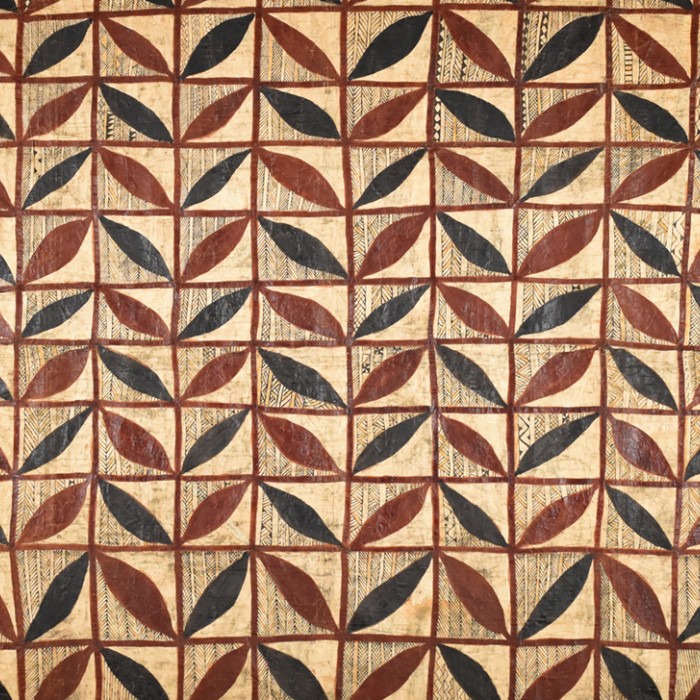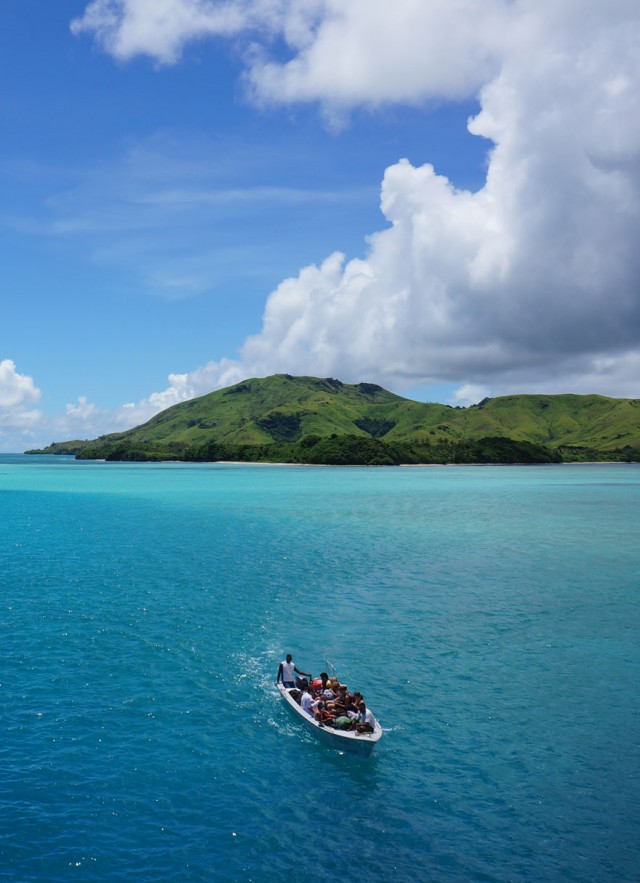
What Are Tapa and Woven Mats?

Faitau itulau ile gagana Samoa
With the development of the outrigger canoe around 5,000 years ago, groups of courageous individuals took to the seas to find new lands among the thousands of islands in Oceania. Far from a barrier, the ocean provided opportunity and connection.
The communities that settled on the islands shaped them into fertile grounds for prosperity, creating techniques for sustainable agriculture, some of which are still used today. They remained connected to a broader community through a series of networks to other islands and maintained family ties through trade and ceremonial gift exchange. When the European colonizers first explored the islands in the 1500s, they were met by hundreds of cultures that included master navigators, powerful chiefs, expert agriculturalists, and strongly bonded, vibrant communities.
This map does not represent or intend to represent official or legal boundaries of any Indigenous nations nor does it include the thousands of unique islands and hundreds of cultures in this region. The names featured represent most of the origin countries and territories of the tapa and woven mats mentioned in this exhibit.
While the first settlers of the Pacific Islands are thought to have crossed over land from northern Australia to New Guinea at least 40,000 years ago, evidence for human movement east of the Solomon Islands originates with groups of master seafarers in southern China approximately 5,000 years ago. Using the sun, stars, wind patterns, ocean currents, and bird flights to guide their outrigger canoes, these extraordinary voyagers brought with them domesticated plants and animals, allowing multiple generations to settle and thrive on the thousands of islands in Oceania.
Understanding how to live within and transform their environment to support the needs of their communities was key to developing the thriving cultures of the Pacific Islands. From mastery of the sea and marine resources when many islands were first inhabited to development of agricultural practices, each community expertly adapted their unique island landscapes to support their societies.
Many early Pacific Island cultures were hierarchical, with a chief as leader. When the Europeans first encountered the islands in Oceania in the 1500s, they often refused (or failed) to recognize these social structures, thus beginning centuries of intrusion into lands and cultures that had been thriving for thousands of years. As European and American government officials, military forces, missionaries, merchants, medical workers, company employees, and other visitors continued their incursion into the area, they forever changed the region.
The tapa and woven mat collection at NHMLAC is part of this history. From soldiers and medical workers to employees of companies engaging in resource extraction, many visitors collected cultural material from the local communities. Much of this material was donated to American and European museums—including NHMLAC—creating vast collections rooted in colonialism and developed with an outsider’s perspective on the culture.
[Tapa and woven mats] are used as a marker of cultural identity, and are significant because if one can’t be in their own culture and living it daily, then having these tangible markers present are all the more important. They take on new meaning for those in diasporic communities.
—Katrina Talei Igglesden (Fijian)
Today, there are large populations of people with shared Pacific Islands cultural heritage or homelands that live all over the world. Called diasporic communities, there are especially large groups in Aotearoa (New Zealand), Australia, and the United States. California is home to almost 25% of the 1.2 million Kanaka Maoli (Native Hawaiians) and Pacific Islanders currently living in the United States. These communities retain strong bonds to their homelands, preserving their identity by continuing cultural traditions like gifting tapa and woven mats. While each group has its own culture, there are commonalities among them, including the importance of tapa and finely woven mats, which can be found among many diasporic Pacific Island households.
The Natural History Museums of Los Angeles County wish to thank the following community members for their support with this project: Audrey Alo, Cindi Alvitre, Juliann Anesi, Katrina Talei Igglesden, Fran Lujan, Kirisitina Sailiata, Tavae Samuelu, Kelani Silk, Lolofi Soakai, Asena Taione-Filihia, and Craig Torres. The Fabric of Community has been made possible in part by a major grant from the National Endowment for the Humanities (NEH): Democracy demands wisdom. Any views, findings, conclusions, or recommendations expressed in this exhibition do not necessarily represent those of the NEH.